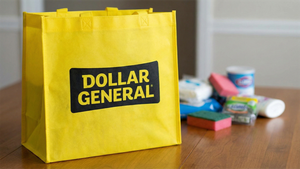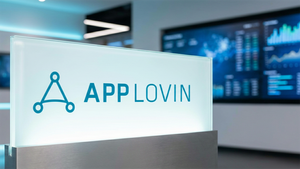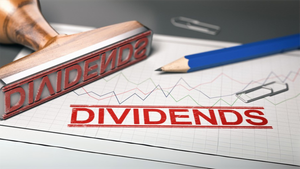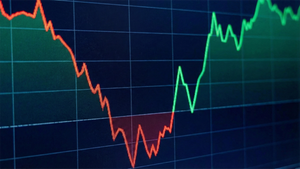
Clothing and footwear retailer Boot Barn (NYSE: BOOT) fell short of the market’s revenue expectations in Q1 CY2025, but sales rose 16.8% year on year to $453.7 million. Its GAAP profit of $1.22 per share increased from $0.96 in the same quarter last year.
Is now the time to buy BOOT? Find out in our full research report (it’s free).
Boot Barn (BOOT) Q1 CY2025 Highlights:
- Revenue: $453.7 million (16.8% year-on-year growth)
- Revenue Guidance for Q2 CY2025 is $487 million at the midpoint, roughly in line with what analysts were expecting
- EPS (GAAP) guidance for the upcoming financial year 2026 is $5.95 at the midpoint, missing analyst estimates by 4.7%
- Operating Margin: 11%, up from 9.8% in the same quarter last year
- Locations: 459 at quarter end, up from 400 in the same quarter last year
- Same-Store Sales rose 6% year on year (-5.9% in the same quarter last year)
- Market Capitalization: $4.94 billion
StockStory’s Take
Boot Barn’s first quarter performance was shaped by broad-based sales growth across both its physical stores and e-commerce channels, with management highlighting a 6% increase in same-store sales. CEO John Hazen attributed the quarter’s results to “increased transactions and full price selling,” supported by strong performance in categories like denim and women’s western boots. Merchandise margin expanded due to supply chain efficiencies, better buying economies of scale, and growth in exclusive brand penetration. Hazen emphasized that the company’s customer loyalty database continued to expand, reaching 9.6 million active members, which has helped tailor merchandise and marketing strategies. The company also noted that its ongoing store expansion into new and legacy markets contributed to increased brand awareness and incremental online demand, particularly in regions such as New York and Alaska.
Looking forward, Boot Barn’s guidance reflects caution around the impact of tariffs on both pricing and consumer demand in the coming quarters. Management stated that while same-store sales trends have been strong in the early part of the year, they expect momentum to moderate as price increases tied to tariffs take effect. CFO Jim Watkins noted, “Our goal is to maintain merchandise margin rate, but we may give up some margin in order to maintain or gain market share.” The company’s outlook includes a range of potential outcomes, reflecting the fluid situation with tariffs, anticipated mid-single-digit price increases from vendors, and possible consumer demand softness. Boot Barn plans to leverage its diversified sourcing strategy and ongoing exclusive brand development to help mitigate tariff-related headwinds, while continuing disciplined investment in new store openings and the in-store customer experience.
Key Insights from Management’s Remarks
Management attributed the quarter’s sales and margin growth to robust store expansion, exclusive brand penetration, and supply chain efficiencies. However, they flagged the evolving tariff landscape and vendor price increases as emerging pressures that could influence demand and profitability.
- Exclusive brand penetration gains: Boot Barn increased exclusive brand sales to 38.6% of revenue, with management crediting this strategy for over one-third of merchandise margin growth. CEO John Hazen said this focus “balanced expanding exclusive brands while driving growth within our third-party partners.”
- Store network expansion: The company opened 60 new stores over the year, extending its reach into four new states and ending the quarter with 459 locations. New stores contributed directly to revenue growth and were cited as a driver of both in-store and online sales gains.
- E-commerce and omnichannel growth: E-commerce same-store sales grew 9.8%, with bootbarn.com accounting for about 75% of online sales and performing at low double-digit growth. Management noted that opening physical stores in new markets led to immediate online demand increases in those regions.
- Supply chain and inventory management: CFO Jim Watkins attributed improved merchandise margin to supply chain efficiencies, lower inventory shrink, and proactive inventory purchases ahead of anticipated tariffs. The company accelerated receipts to mitigate tariff exposure and diversified sourcing, reducing exclusive brand production in China from 24% to an expected 12%.
- Category performance variation: While most categories saw growth, denim and women’s western boots led with mid-teen gains, and work boots remained a soft spot with low-single-digit declines. Hazen said renewed marketing focus will target work boot sales in the coming quarters.
Drivers of Future Performance
Management expects future results to be shaped by tariff-related cost pressures, pricing strategies, and continued investment in exclusive brand and store growth.
- Tariff impact and mitigation: Boot Barn anticipates $8 million in incremental tariff costs in the year, primarily affecting the second half. The company is responding by shifting sourcing away from China, raising select retail prices, and balancing margin preservation with the goal of retaining market share. Management cautioned that consumer demand may soften as price increases are implemented.
- Exclusive brand and pricing strategy: The company plans to hold or selectively raise prices on exclusive brand products, especially where psychological price points are at risk. Hazen explained that pricing decisions are made style-by-style to maximize competitiveness, with potential for exclusive brand penetration to rise if third-party prices increase more sharply.
- Continued store expansion: Boot Barn aims to open 65–70 new stores in the coming year, spanning both new and legacy markets. Management believes this expansion will support incremental sales, improve fixed-cost leverage, and enhance omnichannel performance as new stores typically drive a “halo effect” on regional online sales.
Catalysts in Upcoming Quarters
In the coming quarters, the StockStory team will focus on (1) how effectively Boot Barn navigates tariff-driven cost pressures through sourcing and pricing actions, (2) the pace and profitability of new store openings across diverse markets, and (3) the trajectory of exclusive brand penetration, especially as consumer demand responds to higher price points. Sustained merchandise margin and the ability to drive category growth, particularly in work boots and apparel, will also be key indicators of execution.
Boot Barn currently trades at a forward P/E ratio of 26×. At this valuation, is it a buy or sell post earnings? Find out in our full research report (it’s free).
High Quality Stocks for All Market Conditions
Donald Trump’s victory in the 2024 U.S. Presidential Election sent major indices to all-time highs, but stocks have retraced as investors debate the health of the economy and the potential impact of tariffs.
While this leaves much uncertainty around 2025, a few companies are poised for long-term gains regardless of the political or macroeconomic climate, like our Top 6 Stocks for this week. This is a curated list of our High Quality stocks that have generated a market-beating return of 183% over the last five years (as of March 31st 2025).
Stocks that made our list in 2020 include now familiar names such as Nvidia (+1,545% between March 2020 and March 2025) as well as under-the-radar businesses like the once-small-cap company Comfort Systems (+782% five-year return). Find your next big winner with StockStory today.




